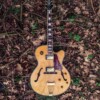How do two utterly dissimilar things come together? How can they be reconciled?
By rising.
As the phrase goes, attributed to the Jesuit scientist Pierre Teilhard de Chardin and popularized by the novelist Flanner O’Connor, “everything that rises must converge.” And it converges upon a lofty, shared Object, the source and end of our desire, the One God who is True, Beautiful and Good.

Jesus as the point at which all things converge: animate and inanimate, living and dead, visible and invisible. (The Transfiguration, 15th c. Russian icon.)
In missions work, where culture is meeting culture, and where deeply embedded, alien-to-each-other systems are colliding for the first time, identifying the convergence point is crucial. Often, missionaries must navigate within preexisting belief systems, showing how the deepest and purest truths of the local culture are actually congruent with, and even prefiguring of, Jesus the Son of God, who is also the Sacrificial Lamb and the King of the Universe.
In these translations, a higher meeting point is found, joining huge disparities of language, tradition and image, demonstrating profound intuition of a higher truth from which all goodness flows, and to which all goodness returns. Jesus is shown to be the true object of all hearts’ desires, worldwide, from the very beginning.

An example of spiritual-cultural convergence: The Black Christ of Esquipulas. Discussed in my last CSR blog post.
This is what the Apostle Paul proclaimed about the “unknown god” on Mars Hill, and this is how many have come to Jesus. Those who worship the sun find that Jesus is the True Sun. Those who worship the King find that Jesus is the True King. Those who worship a Celestial Lover find that Jesus is the True Lover. Wherever sincere hearts vault themselves toward what is worthy, even if it is hidden in shadow and mist, the Lord at length provides. In due time, the Lord gives a glimpse of what is truly lovely, truly good, truly true.
And then, all those who have found Him, who have treasured Him in their hearts, look side to side and struggle to recognize their sisters and brothers. “Have you found Him, too? But you look so strange! How can this be?” ____________________________
This month, I have been teaching in a study abroad program hosted by Gordon College, located in the upper city of Orvieto, Italy, which has a population of less than 10,000. Orvieto, home to a famous Eucharistic relic and origin of the important global Catholic feast of Corpus Christi, is a small and thoroughly “papist” town, with several Catholic Churches and no Protestant ones. In addition, its religious expressions often exhibit the highest medieval ceremony. For many of the students here, the cultural unfamiliarity of such practices is initially destabilizing – or at least, mystifying. And there can be knee-jerk distrust.
But the students are learning to find a convergence point. THE convergence point. After some adjustment, they have begun to see Jesus in the sincerity and reverence of the Orvietans, and this understanding expands, for them, the arc of possible worship expressions that can be offered to God

Lighting of the Easter Candle in the nave of Orvieto Cathedral. Photo by the author.
The pendulum swing of the church-in-the-world is fixed, of course, at a high point far above all. It is fixed in the heart of God. Only by looking to this point of suspension in reverence, love and reckless sacrifice, can we begin to trace the arc that connects us. For those of us beneath, this suspension point is our convergence point, and we flow in the propulsion traced below it, side to side, East to West, as the wind of the Holy Spirit blows.
And at length, perhaps – as things reach their fulfillment – we can weave a texture of connection across this arc’s terrain, in the finest colors, picked out with golden thread. Then the expanse of Church will become manifest at all times, and for all time, in harmony and splendor, unified and complementary
And each in their own place, connected in love, will cry: “Brothers and sisters, come listen! Let me describe the beautiful view from here!”

The view from here: Orvieto Cathedral emerging from a narrow medieval street. Photo by the author.
























I know have the Sufjan Stevens song running through my head — “Everything that Rises must converge” — Thanks for another great reflection.